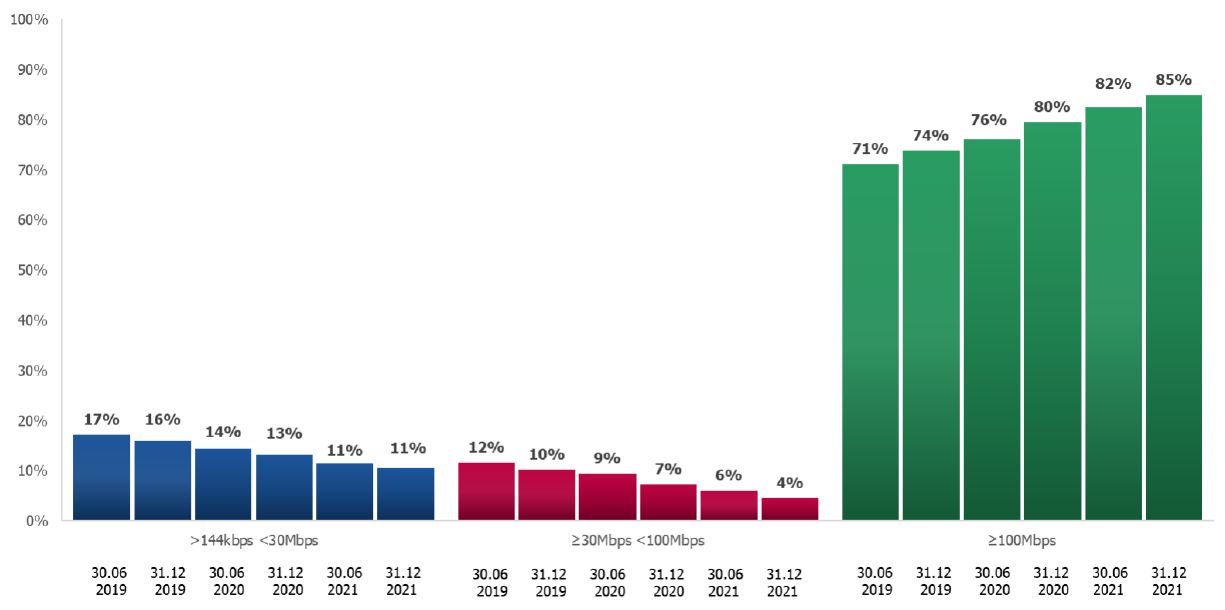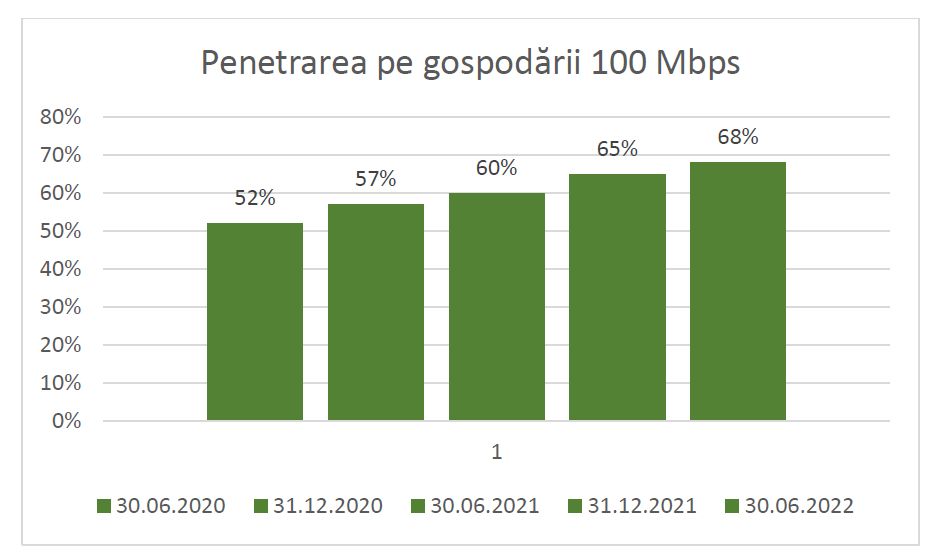
Functional access to fixed Internet will mean a maximum data transfer speed of at least 100 Mbit/s, and public authorities will be required to support access to such services through the rapid issuance of building permits or free access to public or private company property they manage to install networks, according to the draft order of the Ministry of Digital.
With this draft order, which practically completes Law 175/2022, the state is trying to develop fixed Internet networks at 100 Mbps faster in white areas or areas with weak Internet coverage in Romania.
- SEE DRAFT ORDINANCE AND FOUNDATION RECORD HERE
The speed set by this order is also in line with the EU’s ambitious connectivity goals: access to 100 Mbps networks for all European households by 2025, with the ability to upgrade these networks to reach much higher speeds.
A working fixed internet connection will mean a maximum download speed of at least 100 Mbps
- Article 1 – (1) On the date of entry into force of this order, the characteristics of the functional service of broadband access to the Internet through connection to a fixed point are able to provide the necessary conditions for the participation of individuals from the point of view of socio-economic society. (..)
- Article 2 – (1) For the purpose provided for in Art. 1 the required download (upload) data rate is set at 100 megabits per second (Mbps) for fixed-point broadband Internet access services.
- (2) Transmission speed provided for in para. (1) represents the maximum data transfer rate as provided for in Regulation (EU) 2015/2120 of the European Parliament and of the Council of 25 November 2015 laying down measures for access to the open Internet (..)”, it is stated in the draft ministerial order.
The maximum data rate is the data rate that an end user can experience at least once in a specified time period, the rationale states.
In a situation where providers in the field of electronic communications implement solutions that provide a maximum data transfer rate above 100 Mbit/s, this will be considered equivalent and meet the characteristics of the functional broadband Internet access service established by this order.
Functional access to the Internet: A minimum set of services for consumers
The new EU regulatory legal framework in the field of telecommunications aims at the provision of fixed Internet services, characterized by a connection that provides functional access to the Internet, defined on the basis of a minimum list of online services that allow end users to participate in social networks. and the economic environment.
In Romania, Art. 77 par. (12) from GEO No. 111/2011 and includes the following:
- a) use of e-mail services;
- b) access to search systems that allow searching and identifying information;
- c) access to online tools for training and basic professional training;
- d) access to newspapers or online news;
- e) purchase or order of goods or services on the Internet;
- f) job search, as well as job search tools;
- g) professional interactions through special networks;
- h) access to banking services via the Internet;
- i) use of electronic government services;
- j) access to social networks and instant messaging services;
- k) making and receiving calls of standard quality and video calls.
The speed set by this order is also in line with the ambitious connectivity goals set by the European Union: access to 100 Mbps networks for all European households by 2025, with the ability to upgrade these networks to reach much higher speeds.
How many Internet connections in Romania have a speed of 100 Mbps and how many households have such services
According to data collected by ANCOM from providers, at the end of 2021, 85% of fixed Internet connections allowed a maximum data transfer speed of 100 Mbps, with the number of users constantly increasing.

Additionally, household penetration reflects the same majority trend of 100 Mbps availability, with steady growth recently.

According to the 2021 Annual Report on the Quality of Internet Access Service, developed by ANCOM based on measurements carried out by the Netograf platform, 27 counties have an average download speed for a fixed Internet access service of more than 100 Mbps, and 8 countries have an average speed of download over 100 Mbps.
During 2021, the average download speed for the top 5 fixed line providers with approximately 97% market share ranged from 242.7 to 854 Mbps, and the average download speed for these providers ranged from 27.8 to 402.3 Mbps /s for wired connection.

According to ANCOM’s 2021 annual report on the quality of Internet access service, the average download speed of Internet access service at a fixed point (for cable and Wi-Fi connection) nationally recorded a value of 259.8 Mbps, and the speed the national average download reached 179.1 Mbps, as can be seen in the following graph.
Analyzing the 2021 data compared to the 2020 data nationally, there was an increase of approximately 40% in average download speed and approximately 60% in average download speed for fixed connections.
Photo source: Dreamstime.com
Mary Robinson is a renowned journalist in the field of Automobile. She currently works as a writer at 247 news reel. With a keen eye for detail and a passion for all things Automotive, Mary’s writing provides readers with in-depth analysis and unique perspectives on the latest developments in the field.